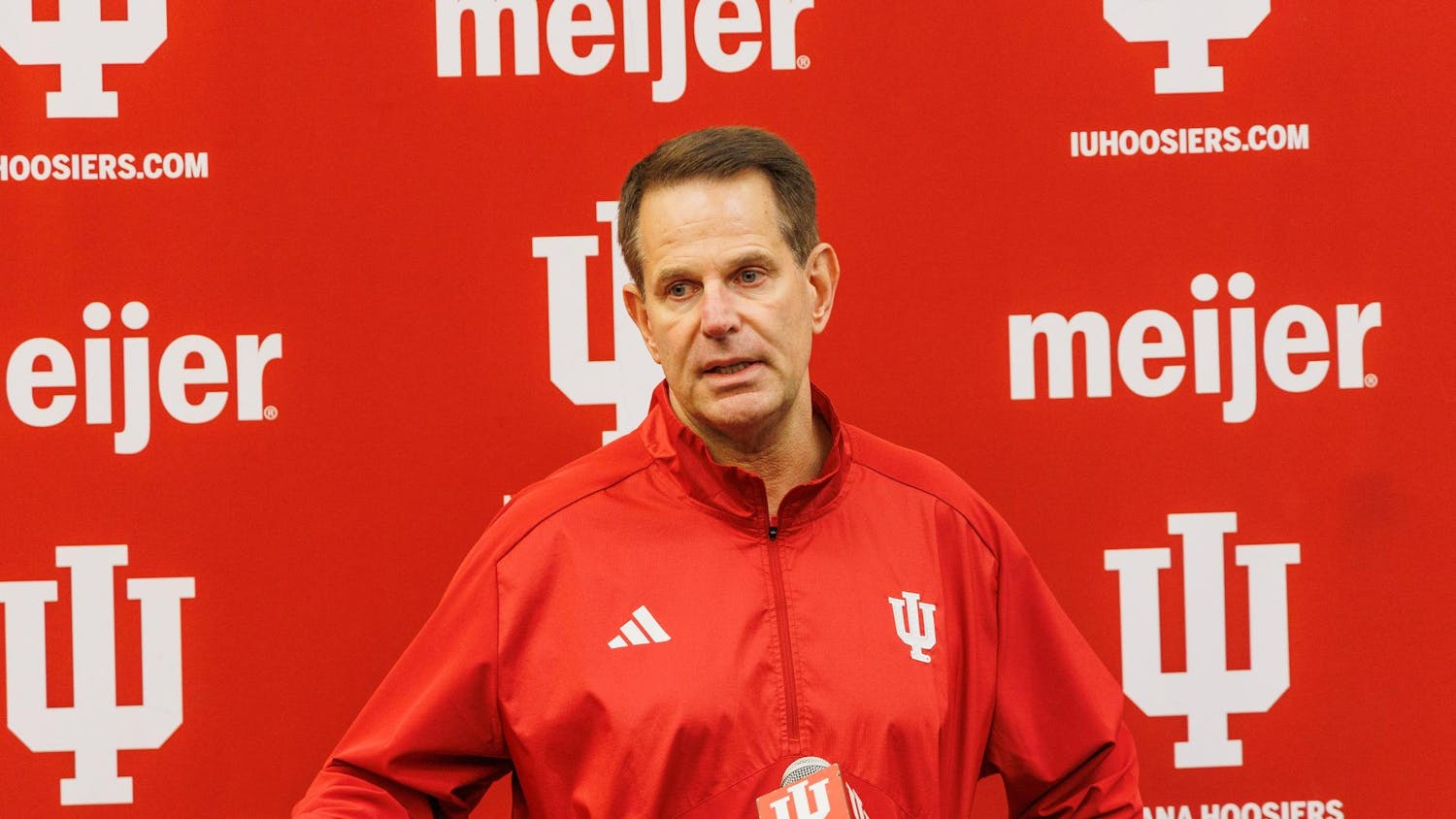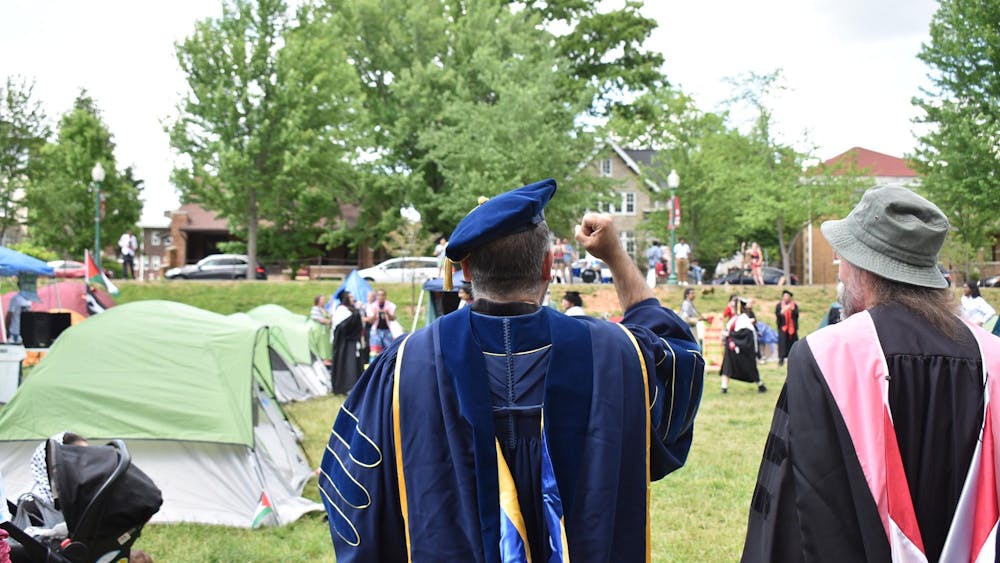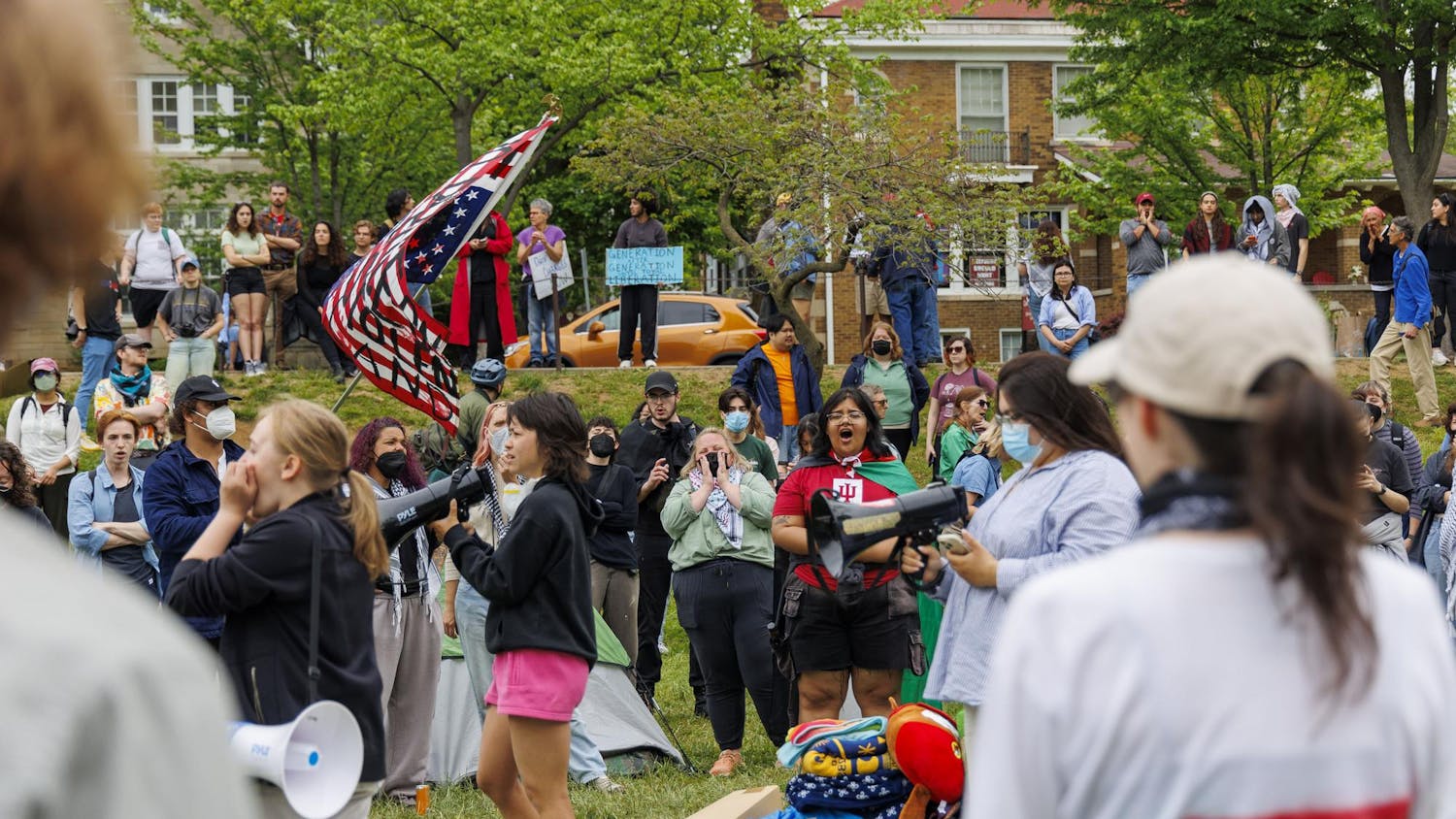This is the experience many blind people face each time they need to use a public restroom, Cierra Thomas-Williams, a prevention specialist from the Indiana Coalition Against Domestic ?Violence, said.
“No public bathroom in America is exactly the same,” Thomas-Williams said. “For blind people, an inaccessible bathroom is enough to make them feel uncomfortable and unsafe. It excludes them from civic engagement.”
Though restaurant and business owners in Bloomington almost never intentionally exclude people with disabilities, many obscure things can become insurmountable obstacles for disabled people as they attempt to navigate the public world.
Sidewalk curbs built with 90-degree angles, for example, are difficult to maneuver for people in wheelchairs. Curbs with rounded edges still serve the same public service, but are more easily rolled over.
In order to confront these structural aspects which unintentionally hinder disabled people from being involved in the community, Thomas-Williams is leading a social mapping project in Bloomington.
She has gathered a team of 30 local residents to carry out the plan. Fifteen are people with developmental or intellectual disabilities or self-advocates. The other 15 are working professionals who say they feel making Bloomington more accessible is an important mission.
These volunteers will split into groups with equal numbers of self-advocates and professionals. They will then map nine different locations in Bloomington, carefully analyzing what makes those spots either welcoming or worrisome for the self-advocates.
“They’ve identified places that they want to go but don’t feel like they can, and they’ve identified places that they love to go,” Thomas-Williams said. “We want to figure out exactly what it is that makes the former places so desirable and inclusive and then replicate that for the places that are not so ?inclusive.”
The group has chosen to map Wal-Mart, Target, the YMCA, three different neighborhoods, a park and the Monroe County Public Library.
“The library is one built-in protective factor in the community,” Thomas-Williams said. “But because it’s a wide open space, it’s actually uncomfortable for people who are blind. So, it’s a wonderful place for the community unless you happen to be blind, and then it’s a bit confusing.”
Two of the professional team members are representatives of the city’s public transportation system. Thomas-Williams said these partners have agreed to adjust their routes if the project discovers an at-risk portion of the population is being left out.
The social-mapping project, which is set to be complete by January 2016, is not the only group working to improve the lives of disabled people living in Bloomington. In honor of the 25th anniversary of the Americans With Disabilities Act, the Monroe County History Center is hosting a miniature exhibit commemorating the history of the disability movement in Monroe County.
The five-week exhibit, which began June 19, is part of the center’s Community Voices Gallery. This is a space designated by the museum for local charities and social groups to spread their messages and share their stories.
“There are a lot of different organizations in Bloomington and there aren’t a lot of places where they can show people what they’re all about,” Jenny Mack, the center’s exhibits manager, said. “Sometimes it’s hard to get people to notice them, so this is a great way for them to feature their work and celebrate the people who have been a part of it.”
The small room is covered with photographs and newspaper clippings of smiling locals who live and thrive with disabilities.
The exhibit shares the story of Byron Smith, a blind man who grew up in Bloomington and attended IU. Old newspaper clippings show Smith, who is now a retired radio producer, meeting then-Vice President Richard Nixon at the White House when he was eight years old and being read to by Delta Gamma sorority sisters who helped him complete his high school homework every day.
Carolyn Abbit, a best-selling artist with the Stone Belt Arts and Crafts program, is also featured. Abbit was one of the first children to ever use services offered by Stone Belt, a service provider for individuals with developmental disabilities in south central Indiana. Today she is best known for creating the eight-foot tall blue pig which stands on the B-Line trail.
The exhibit encourages people to think carefully about how they treat disabled people. “Don’t talk down to me,” one sign reads. “Challenge me,” prompts another.
One board, in particular, encourages gallery visitors to take part in the disabilities movement. It asks them to write down the improvements they’ve seen for the disabled in the Bloomington community and the challenges the city has yet to overcome. It seems clear those who have attended, like the social mappers, do not shy away from advocating for themselves, requesting more outdoor programs and paid sick leave.
Though they’re focused on the future, they’re also happy to celebrate how far they have come.
“No one is labled ‘feeble-minded,’” one note reads. “Learning disabilities can be overcome.”





